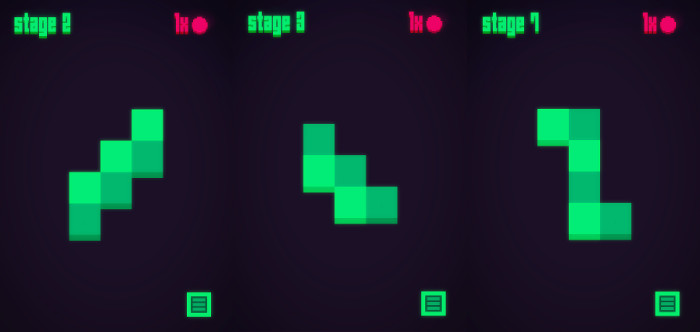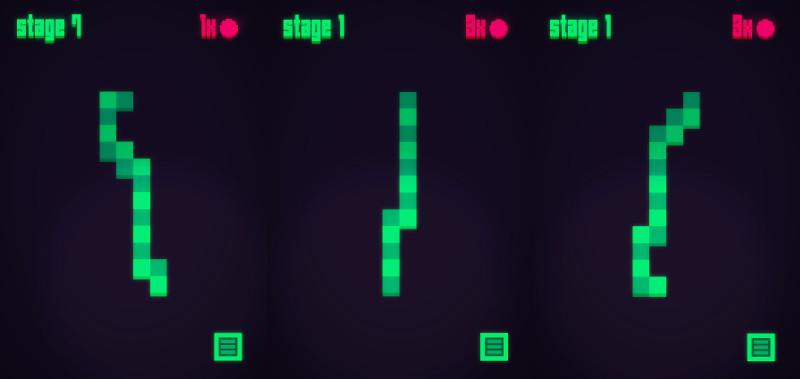Level Generation in Mindmazer
Today I want to talk about my project mindmazer. In this simple 2D puzzle game the player has to remember a certain path to progress to the next stage. When starting this project I had to decide if I give the player a static list of predefined levels. After some time I decided against it and went for a procedural generation approach. In this article I am going to explain how these levels are generated.
The Level
Typical ingame level look like this:

You notice that the shapes are quite simple and the path is easy to remember. Therefore, as more you progress in the game as more complex the level become:

How to generate those levels? Well, first of all I am using libgdx for all my games. This Java library allows me to draw things on the screen and to define a framework to run my game with. Unfortunately, this library does not give me an “out-of-the-box” level generator. Thus, I had to write an algorithm myself.
Biom Data
Let us first describe how a level should get defined. I did not want to have a “random” algorithm which just appends more cells into random directions. The result would be a randomly formed snake where I wouldn’t have any control over. At least I wanted control about various level aspects. Each level is composed out of multiple parts, so called biomes. A biom is defined Java code. Let us take a look at a typical L-Shape:
x
x
x x
This L-Shape can be represented by a byte array:
byte[] L_SHAPE = {
1, 0,
1, 0,
1, 1, 2
};
You might notice that there is an extra entry in the array:
byte numberOfColumns = L_SHAPE[L_SHAPE.length - 1];
Basically we are telling our level generation to always consider the last entry in a byte array as information about the number of columns in this specific biom. This is all we need as input. We now have full control over which parts should get used to compose a level.
Biom Conversion
We need to prepare the input data (byte arrays) into a format the algorithm understands. This format is a so called Biom class with the following properties:
byte[][] datathe biom as a 2-dimensional byte array (without metadata)int startXthe x index on the biom where the player could possibly startint startYthe y index on the biom where the player could possibly startint endXthe x index on the biom where the player could leaveint endYthe y index on the biom where the player could leaveint lengththe number of cells inside a biomint widththe width of a biom (number of cells)int heightthe height of a biom (number of cells)
We now call a so called BiomFactory which creates a Biom object for us:
Biom biom = biomFactory.create(L_SHAPE);
If you are interested in how this factory works internally check out the code on Github.